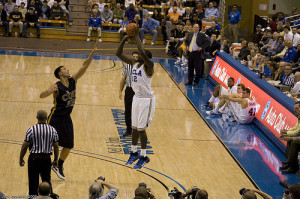How to Teach a Jump Shot
Teaching a Jump Shot can be a very challenging exercise for coaches. However, it is at these lower levels of development where it is most important to set a good foundation for one of the most utilised skills a player will come across during their time playing basketball. Every coach can think of one player at least that has struggled with the development of their jump shot and if not addressed quickly this problem can have a very significant effect on a players confidence and career at length.
The jump shot needs to be taught in both a catching and dribbling situations. Both scenarios are vital as they will feel different to the player and if only the dribble is taught then this will only result in one skill being developed in absence of the other which will create a weakness in a players overall skill set.
The progression towards an effective and efficient jump shot should begin with the development of the set shot. Form shooting will help a player develop the much need technique to ensure the basic foundations of the jump shot are build early. A jump shot adds an extra layer of complexity to the shooting technique with the additional of the jump and therefore should be undertaken once a player masters many of the fundamental elements required in the set shot.
Outside of the fundamentals of the technique around the set shot, there are some very key points to teach about the jump shot. These include:

Feet should be no wider then shoulder width apart: Anything wider and the stance will become not functional off the dribble. A solid stance will allow a player to generate equal and maximum power through the legs and into the shot
Have a low stance (off the dribble or upon reception of the pass): Once the ball is received or picked up off the dribble a players movement should only be in one direction that is up and into the jump. This will help with a quick release within the jump shot. This teaching point also helps a player start to lock into the skill performance so it can become automatic.
Always show target hands (when shooting off a pass): Players must show where they would like a pass to be made to. This can be different depending on the individual. However, a shooter cannot be angry with a poor pass if they do not provide a target for the passer.
Once the ball is picked up, eyes move onto the basket: This helps a player see the target early. This will only help a player by providing more time to make decisions about distance and force to put into the shot.
Jump straight up: When performing a jump shot a player will often find they move forward slightly. This will happen depending on the speed at which the shot is executed, especially off the dribble. By jumping straight up however the player will help keep their head still which helps with shot accuracy and consistency. This teaching point will also help with elevation and reduction in torso rotation, which can often be problematic with a player’s jump shot.
Elevate and release just before the top of the jump: Players often tend use a minimum jump in their jump shot. This however can cause a number of issues when using a jump shot off the dribble. When dribbling a player should use a high jump to rise above the defence and help see the target and floor. Additionally a higher jump will also provide more time for the action of the shot to be performed which will improve consistency of the player’s jump shot.
By releasing just before the peak of the jump ensures the maximum amount of force can be applied to the jump shot. A player may choose not to use all of this energy, but they will have that choice. If not they will be force to generate the needed power from their arms which will alter the players shot.
Holding the follow through until landing: The follow through in a players shooting action will help a player ensure they are using the best possible technique. Failing to do this will result in a player underperforming the technique of their jump shot and this can lead to a number of errors and problems. Once landing a player can then be active in moving into rebounding or defensive transition positioning, but while on the way down from the release of the shot, a player should ensure they finish their shooting technique.
Make shot adjustment: Through holding the follow through on the jump shot, a player must start to self-coach and make their own corrections while on the floor in real time. These teaching points need to be explained and reinforced to players so they can help themselves outside of the instruction directed by their coaches. Players spend far too much time away from their coach, not to give them the tools to help themselves.
The jump shot is important to a player at all levels of the sport and in all positions. Setting good building blocks in their technique will pay dividends for a player as long as they are associated with the sport of basketball.






